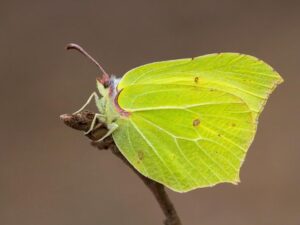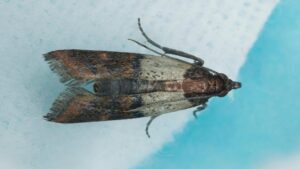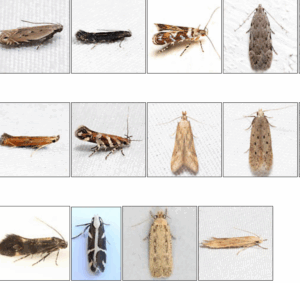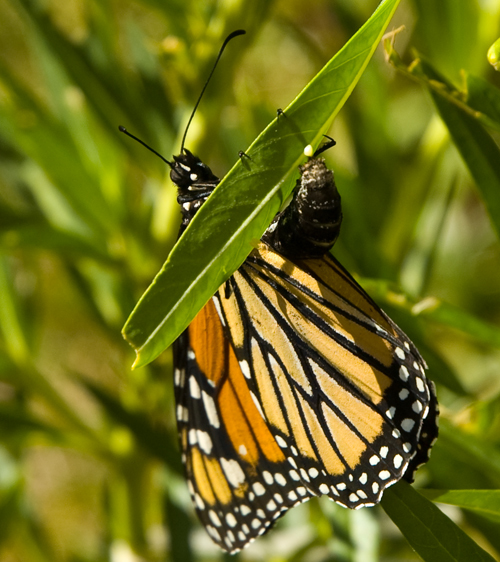
What is the average lifespan of a monarch butterfly?
Adult monarchs live for anywhere from 2 to 6 weeks, and females lay eggs and males mate throughout most of this period.
During the summer breeding season, monarchs live for only 2-6 weeks. But the monarchs that migrate to Mexico in the fall are different: They are born in late summer, stay alive all winter, and migrate north the following spring. How long do these monarchs live?
New Zealand’s most identifiable butterfly is the monarch (Danaus plexippus). Although found in many places around the world, the monarch is considered a New Zealand native because it became established here on its own. Scientists believe that monarchs were blown from New Caledonia and/or Vanuatu to Australia via cyclones and then blown over to New Zealand a few years later.
Monarch Butterfly Life Cycle
Monarch butterflies go through four stages during one life cycle and through four generations in one year. The four stages of the monarch butterfly life cycle are the egg, the larvae (caterpillar), the pupa (chrysalis), and the adult butterfly. The four generations are actually four different butterflies going through these four stages during one year, until it is time to start over again with stage one and generation one.
In February and March, the final generation of hibernating monarch butterflies comes out of hibernation to find a mate. They then migrate north and east in order to find a place to lay their eggs. This starts stage one and generation one of the new year for the monarch butterfly.
In March and April the eggs are laid on milkweed plants. They hatch into baby caterpillars, also called the larvae. It takes about four days for the eggs to hatch. Then the baby caterpillar doesn’t do much more than eat the milkweed in order to grow. After about two weeks, the caterpillar will be fully-grown and find a place to attach itself so that it can start the process of metamorphosis. It will attach itself to a stem or a leaf using silk and transform into a chrysalis.
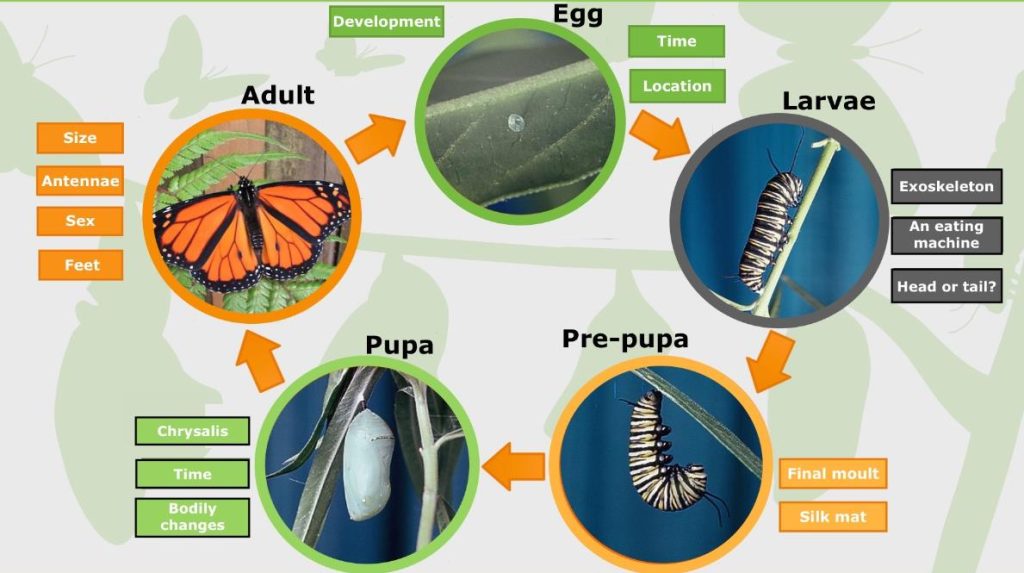
From the outside, the 10 days of the chrysalis phase seems to be a time when nothing is happening, but it is really a time of rapid change. Within the chrysalis the old body parts of the caterpillar are undergoing a remarkable transformation, called metamorphosis, to become the beautiful parts that make up the butterfly that will emerge. The monarch butterfly will emerge from the pupa and fly away, feeding on flowers and just enjoying the short life it has left, which is only about two to six weeks. This first generation monarch butterfly will then die after laying eggs for generation number two.
The second generation of monarch butterflies is born in May and June, and then the third generation will be born in July and August. These monarch butterflies will go through exactly the same four stage life cycle as the first generation did, dying two to six weeks after it becomes a beautiful monarch butterfly.
The fourth generation of monarch butterflies is a little bit different than the first three generations. The fourth generation is born in September and October and goes through exactly the same process as the first, second and third generations except for one part. The fourth generation of monarch butterflies does not die after two to six weeks. Instead, this generation of monarch butterflies migrates to warmer climates like Mexico and California and will live for six to eight months until it is time to start the whole process over again.
The Life Cycle Of a Monarch Butterfly
Watching a monarch butterfly go through its life cycle is like witnessing a miracle unfold. From the moment it first emerges from its chrysalis to its distant migration across the continent, the monarch butterfly is one of nature’s most remarkable creatures.
By understanding each stage of their life cycle, we can gain a better appreciation for these beautiful creatures and also admire the beauty of the monarch butterfly that fills our skies with color!
Throughout this journey, we’ll examine each stage of the monarch butterfly’s life cycle in detail. We’ll explore how they feed and reproduce, how their wings help them fly, and why they migrate so far away each year.
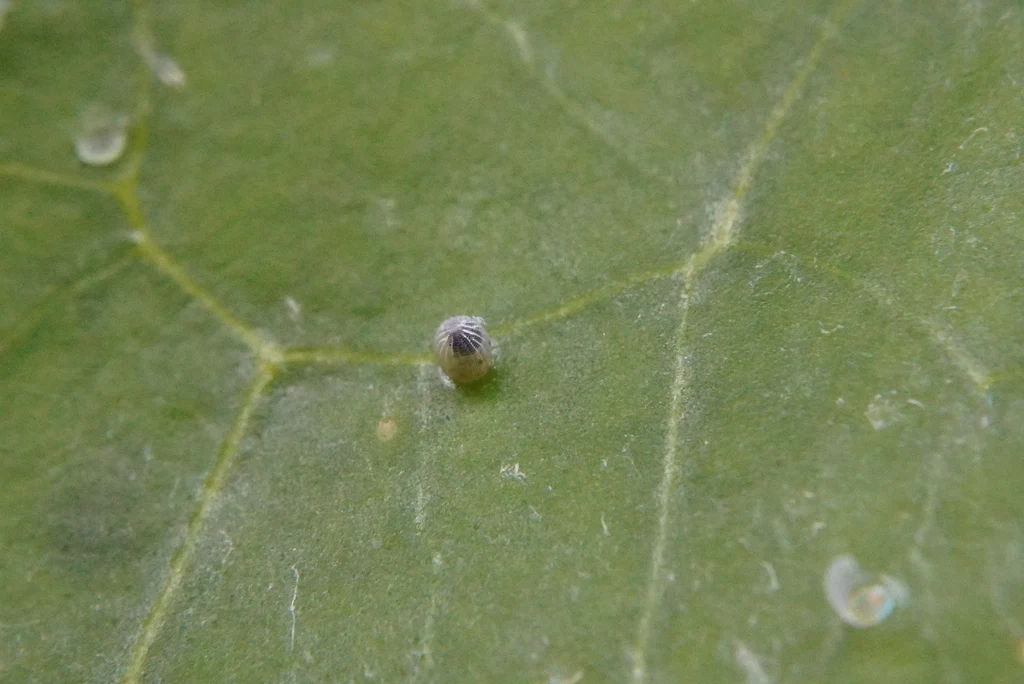
Egg: Tiny Beginnings
It all starts with an egg! Monarch butterflies begin life as a small egg laid by females on milkweed plants. The eggs are usually about 1 mm in size and yellow or white.
Once laid, the eggs only take about 4-5 days to hatch, during which time their protective shell will turn a bronze color. A few factors can influence the hatching success rate of monarch butterfly eggs, such as humidity, temperature and windiness.
Larva: Caterpillar Time
The second stage of a monarch butterfly’s life cycle is the larva or caterpillar stage. This is when caterpillars emerge from their eggs and begin to grow and develop. They have a distinct physical appearance with black, yellow, and white stripes running along their bodies.
The caterpillars grow through several molting processes called instars before they reach the full-grown stage. They go through 5 instants which simply means a process where they “shed skin”.
Caterpillars eat a lot during this stage, munching only on milkweed leaves. Despite being such picky eaters the monarch caterpillars can double their weight every day and grow up to two inches long!
The duration of this larva stage varies depending on environmental conditions but typically lasts between two and three weeks before they form chrysalides. So while it may seem like a relatively short period compared to other life stages, it’s full of exciting transformations and is essential for laying the foundation for adulthood.
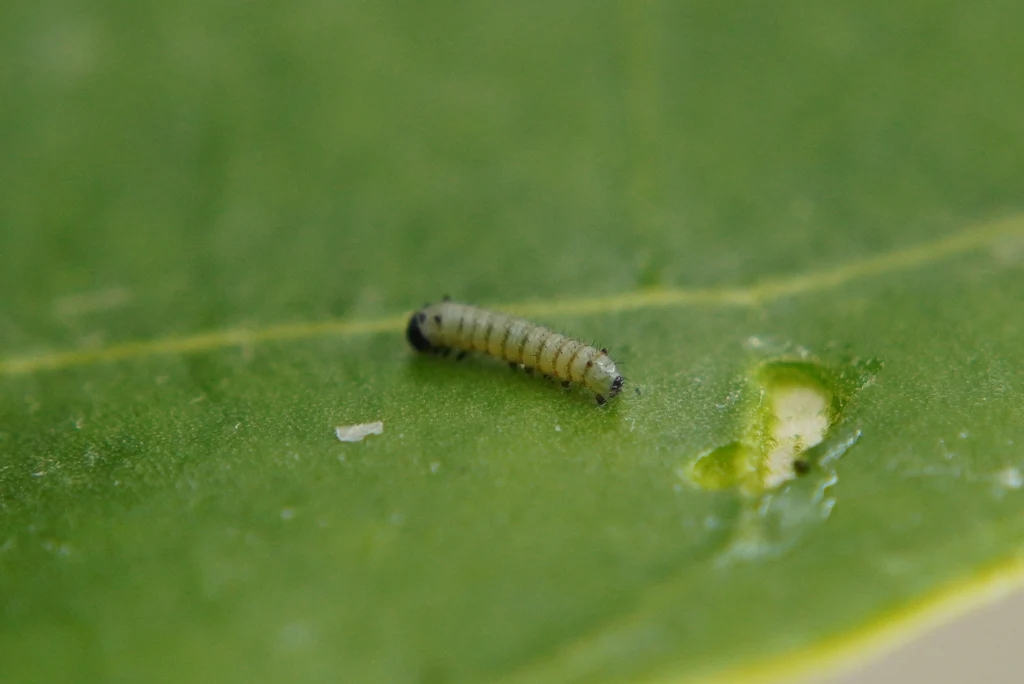
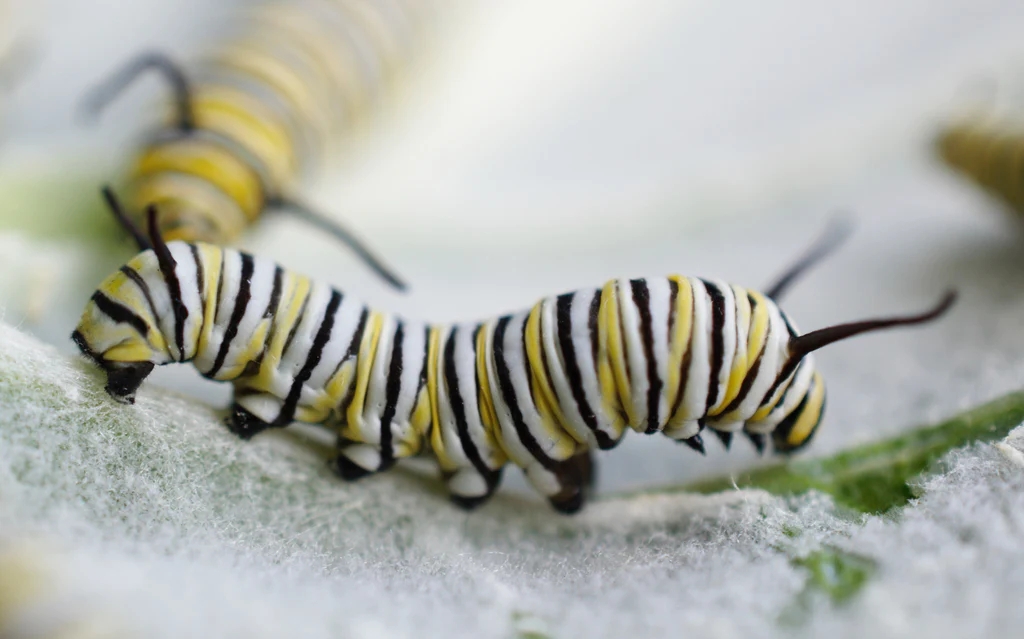
Pupa: Chrysalis Magic
Once the caterpillar has eaten enough and grown to its full size, it’s time to start the next stage of its life cycle: pupa or chrysalis! This is when things start to get exciting.
Formation of the Chrysalis
First, the caterpillar finds a safe spot and prepares to form a chrysalis. It often crawls away from the milkweed plant and finds a safe and covered area, this is so they don’t get disturbed by other caterpillars during the metamorphosis.
It then attaches itself to a stem or a leaf using silken threads and its saliva, then starts shedding its outer layer of skin – a process known as ‘ecdysis’. What is left is a green “envelope” called the chrysalis.
Metamorphosis
Next, metamorphosis takes place—the transformation from caterpillar to butterfly. During this stage, the monarch caterpillar’s body breaks down into liquid form and is reorganized into that of an adult butterfly. It’s an amazing transformation!
Physical Appearance of the Chrysalis
Once the transformation is complete, the monarch’s body is encased in an exoskeleton made up of gold-flecked black stripes. The golden stripes on the chrysalis are formed by tiny yellow spots on the surface of each wing—they look so stunning!
Duration of Pupa Stage
This stage lasts anywhere from 8 days to two weeks, depending on the temperature and humidity level. Once the chrysalis has undergone full metamorphosis, then it’s time for the fourth and final stage – emergence!
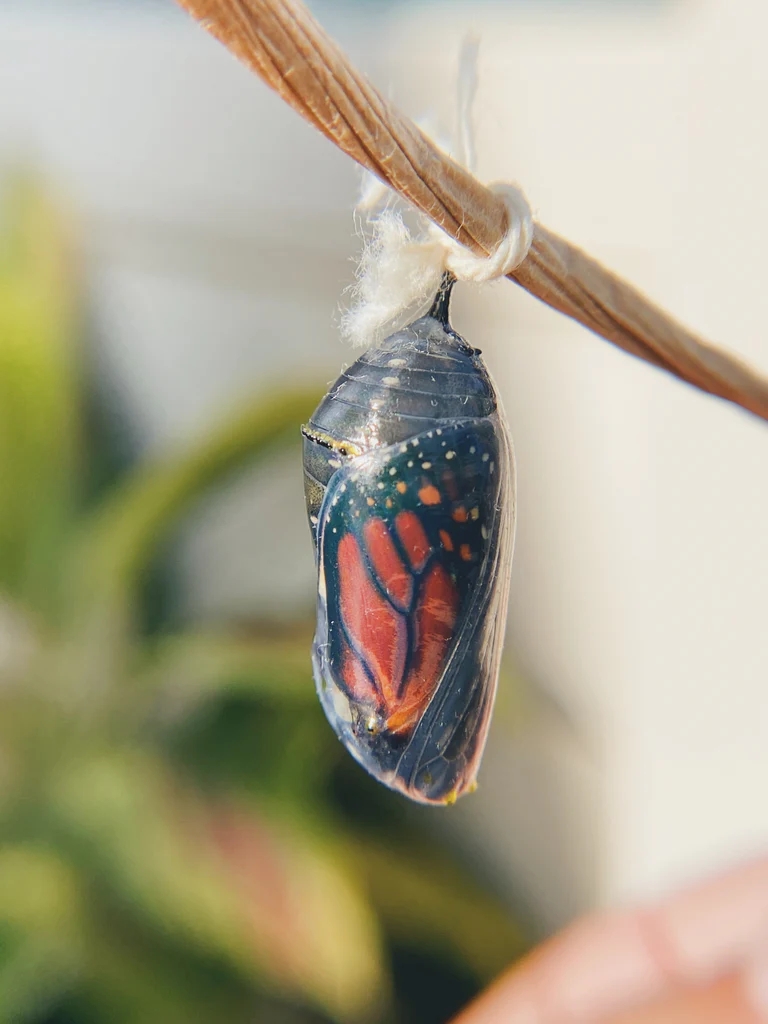
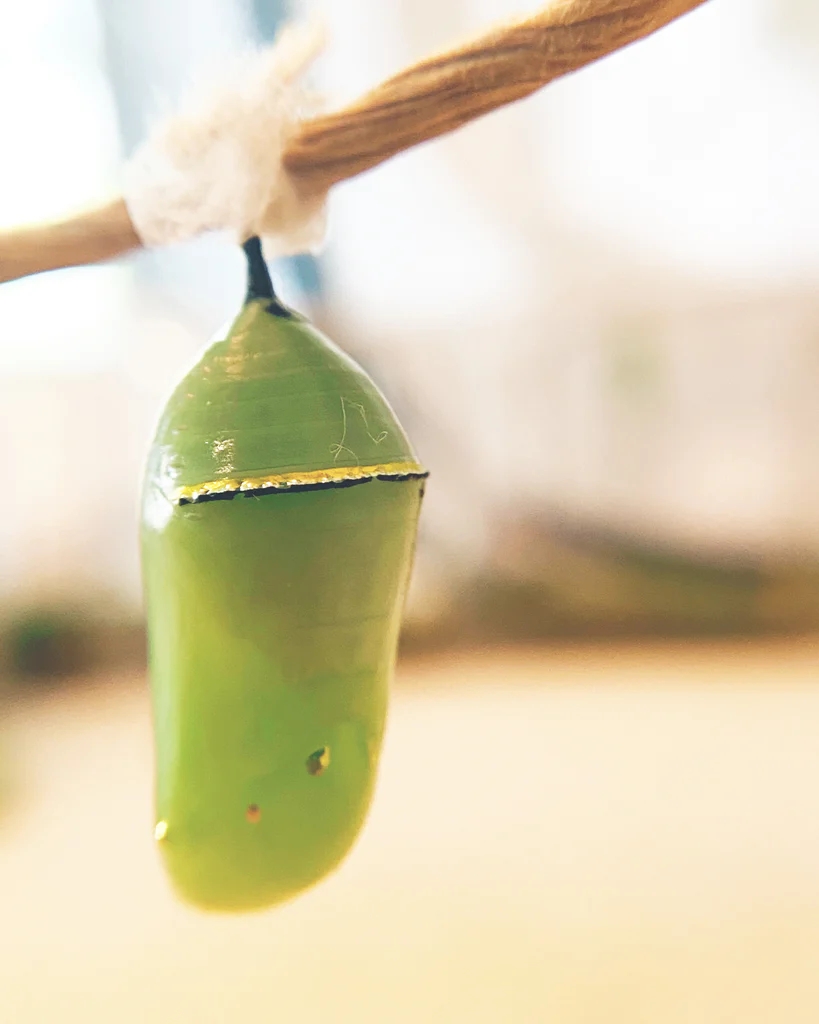
Adult: Reaching the Final Growth Stage
The peak of the monarch butterfly’s life cycle comes with the adult stage – reaching its full growth. After emerging from the chrysalis, adult monarch butterflies become striking, eye-catching creatures with signature patterned orange and black wings.
Physical Appearance
Adult monarchs can have a wingspan of up to 8.5 cm! They have distinct orange, black and white patterns on their wings. Males monarchs, that have distinguishing black dots along the veins of their wings, are slightly bigger than females.
Beyond the veins on their wings there are other ways of telling a male monarch butterfly apart from a female monarch.
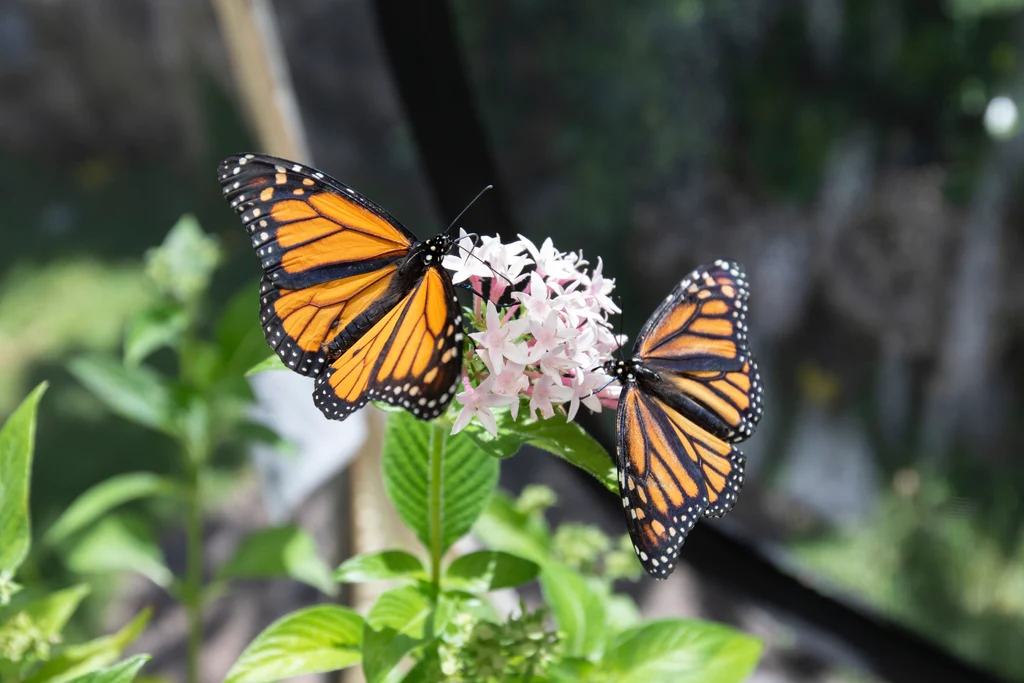
Feeding Habits and Nectar Sources
Adult monarch butterflies feed on nectar from flowers, using their long tongues (proboscis, a tube-like tongue) to reach into them. While they also eat certain types of sap found in rotting fruit or tree bark, they require energy sources like nectar to stay active during migration and breeding periods. By flying around looking for nectar and sap they help pollinate flowers they come in contact with.
Mating and Reproduction
Reproduction begins with mating. Male monarchs will search for a female by flying around and releasing special chemical signals, called pheromones, to help the opposite sex locate them. Once a female is located, a pair will mate by clasping their abdomens together. The male then transfers sperm, contained in a sac known as a spermatophore, to the female– which she will store and use to fertilize her eggs.
During mating season (which typically lasts until mid-September and all year round in Hawaii), female butterflies will lay eggs on milkweed leaves – which is where the next generation of butterfly larvae will emerge after hatching! Over the course of her lifespan, the female can lay up to 400 eggs.

